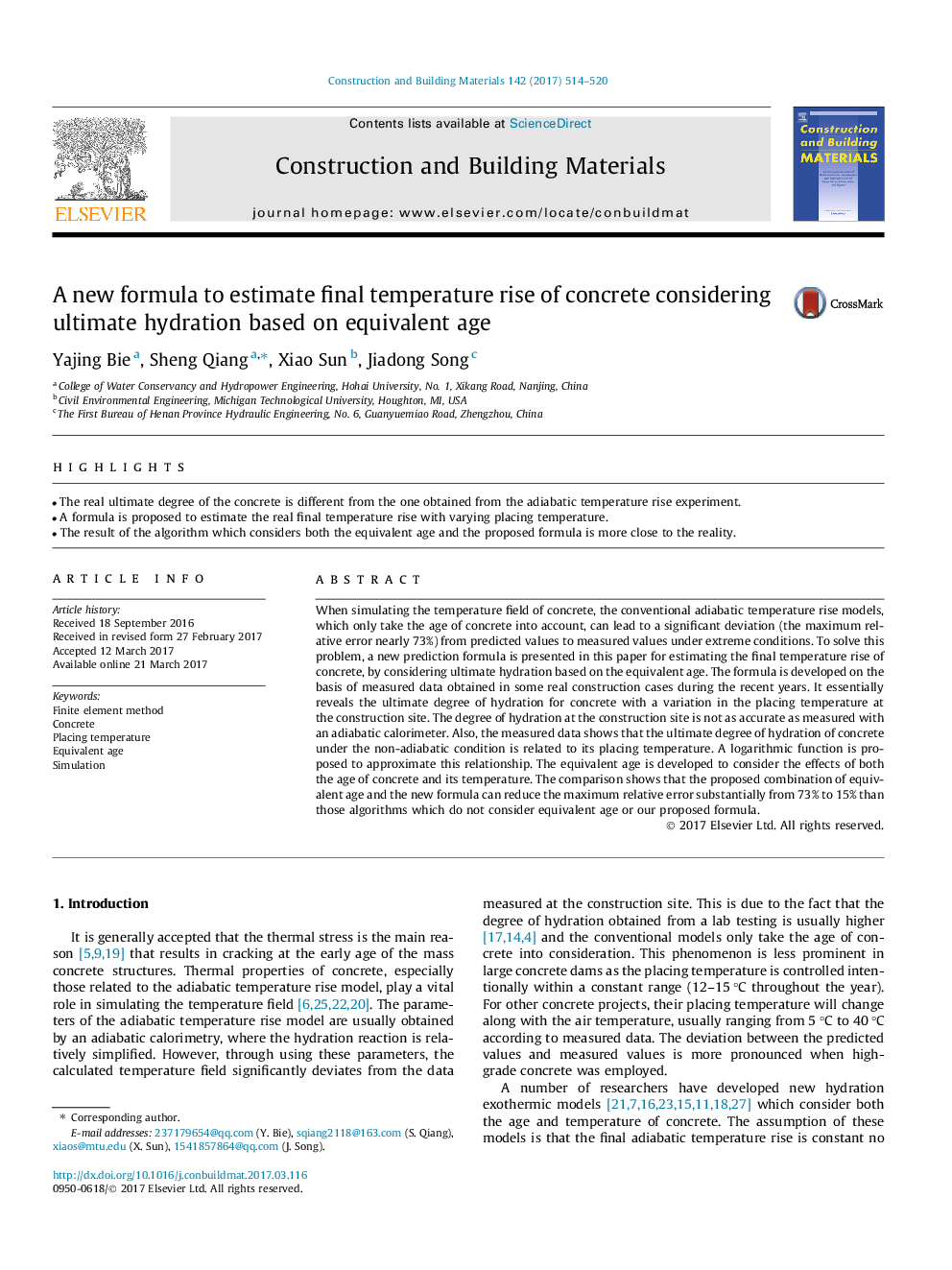| کد مقاله | کد نشریه | سال انتشار | مقاله انگلیسی | نسخه تمام متن |
|---|---|---|---|---|
| 6480751 | 1428764 | 2017 | 7 صفحه PDF | دانلود رایگان |
- The real ultimate degree of the concrete is different from the one obtained from the adiabatic temperature rise experiment.
- A formula is proposed to estimate the real final temperature rise with varying placing temperature.
- The result of the algorithm which considers both the equivalent age and the proposed formula is more close to the reality.
When simulating the temperature field of concrete, the conventional adiabatic temperature rise models, which only take the age of concrete into account, can lead to a significant deviation (the maximum relative error nearly 73%) from predicted values to measured values under extreme conditions. To solve this problem, a new prediction formula is presented in this paper for estimating the final temperature rise of concrete, by considering ultimate hydration based on the equivalent age. The formula is developed on the basis of measured data obtained in some real construction cases during the recent years. It essentially reveals the ultimate degree of hydration for concrete with a variation in the placing temperature at the construction site. The degree of hydration at the construction site is not as accurate as measured with an adiabatic calorimeter. Also, the measured data shows that the ultimate degree of hydration of concrete under the non-adiabatic condition is related to its placing temperature. A logarithmic function is proposed to approximate this relationship. The equivalent age is developed to consider the effects of both the age of concrete and its temperature. The comparison shows that the proposed combination of equivalent age and the new formula can reduce the maximum relative error substantially from 73% to 15% than those algorithms which do not consider equivalent age or our proposed formula.
Journal: Construction and Building Materials - Volume 142, 1 July 2017, Pages 514-520
